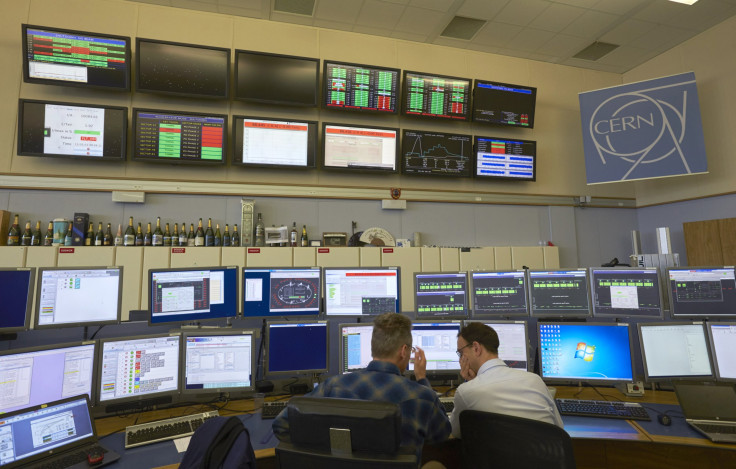CERN Releases 300 TB Of LHC Proton Collision Data, Along With Tools Needed To Study It

Amateur particle physicists, rejoice. On Monday, researchers associated with CMS collaboration at the European Organization for Nuclear Research (CERN) in Switzerland released a massive trove of data gathered during high-energy particle collisions in the Large Hadron Collider (LHC).
“Members of the CMS Collaboration put in lots of effort and thousands of person-hours each of service work in order to operate the CMS detector and collect these research data for our analysis,” Kati Lassila-Perini, a CMS physicist, said in a statement. “However, once we’ve exhausted our exploration of the data, we see no reason not to make them available publicly. The benefits are numerous, from inspiring high-school students to the training of the particle physicists of tomorrow. And personally, as CMS’s data-preservation co-ordinator, this is a crucial part of ensuring the long-term availability of our research data.”
The released data, which adds up to over 300 TB, is freely available for download in two formats —“primary datasets” that are in the same format used by the CMS Collaboration to perform research and would probably make sense only to seasoned physicists, and “derived datasets” that CERN says can be can be analysed by university or even high-school students.
And, to give aspiring physicists a helping hand, CERN has also made a virtual-machine image software — based on its data modelling software CernVM — freely available for download.

“Simulations play a crucial role in particle-physics research and CMS is also making available the protocols for generating the simulations that are provided. The data release is accompanied by analysis tools and code examples tailored to the datasets,” CERN said in the statement.
Despite its staggering size, the released data covers only half of the proton collision data collected by the CMS detector in 2011. Earlier, in November 2014, the collaboration had released roughly 27 TB of data collected in 2010.
“As scientists, we should take the release of data from publicly funded research very seriously,” says Salvatore Rappoccio, a CMS physicist, said in the statement. “In addition to showing good stewardship of the funding we have received, it also provides a scientific benefit to our field as a whole. While it is a difficult and daunting task with much left to do, the release of CMS data is a giant step in the right direction.”
CMS is just one of the four main detectors housed in the 17-mile-long ring of the LHC. Previously, collision data collected by the other three detectors — ALICE, ATLAS, and LHCb — has also been released through the same open data portal.
Scientists at the LHC, which, in 2012, discovered the Higgs boson — a particle that imparts mass to all others — are currently making preparations to restart the powerful particle accelerator. Low-intensity beams have already been circulated through the collider and, from the beginning of May, the LHC is expected to begin its 2016 run.
In December, CERN researchers announced that both the CMS and ATLAS detectors had unexpectedly found, while sifting through the debris of proton-proton collisions, excess photons carrying around 750 gigaelectronvolts (GeV) of combined energy. This may have been a telltale sign of a particle, about six times more massive than the Higgs boson, decaying into a pair of photons of equal mass.
Confirming or disproving this particle's existence would be the key focus of researchers when fresh collisions begin next month.
© Copyright IBTimes 2024. All rights reserved.






















